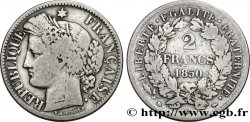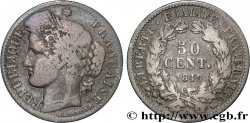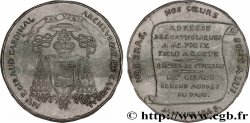v14_0592 - Concours de 5 francs, piéfort de Gayrard, deuxième concours 1848 Paris VG.3076 var.
MONNAIES 14 (2002)
Starting price : 120.00 €
Estimate : 200.00 €
Realised price : 120.00 €
Number of bids : 1
Maximum bid : 276.00 €
Starting price : 120.00 €
Estimate : 200.00 €
Realised price : 120.00 €
Number of bids : 1
Maximum bid : 276.00 €
Type : Concours de 5 francs, piéfort de Gayrard, deuxième concours
Date: 1848
Mint name / Town : Paris
Metal : tin
Diameter : 37 mm
Orientation dies : 6 h.
Weight : 52,15 g.
Edge : inscrite en relief + PIEFORT + CONCOURS 1848
Rarity : R1
Coments on the condition:
Flan légèrement taché d’oxydation et d’une trace noire au revers sinon un exemplaire superbe
Catalogue references :
Obverse
Obverse legend : REPUBLIQUE - FRANÇAISE.
Obverse description : Buste de la République laurée d’olivier à gauche ; non signé.
Reverse
Reverse legend : LIBERTÉ * ÉGALITÉ * FRATERNITÉ.
Reverse description : 5/ FRANCS/ 1848 en trois lignes dans une couronne formée d’une branche de chêne et d’une branche d’olivier.
Commentary
Ce piéfort possède le revers du piéfort de Farochon. Le piéfort en étain n’est pas signalé par Mazard ni par Gadoury avec la tranche inscrite.








 Report a mistake
Report a mistake Print the page
Print the page Share my selection
Share my selection Ask a question
Ask a question Consign / sell
Consign / sell
 Full data
Full data



